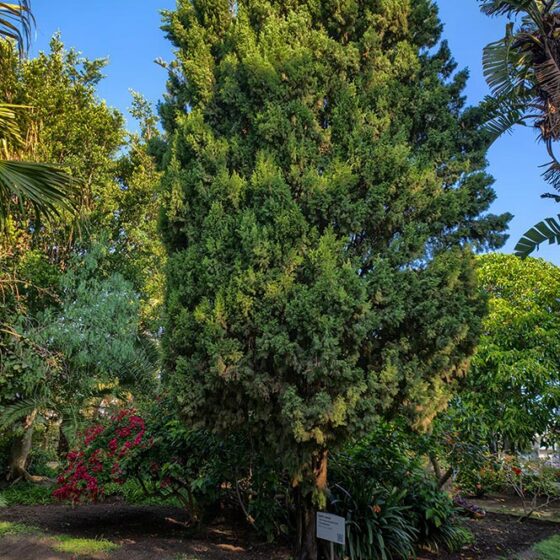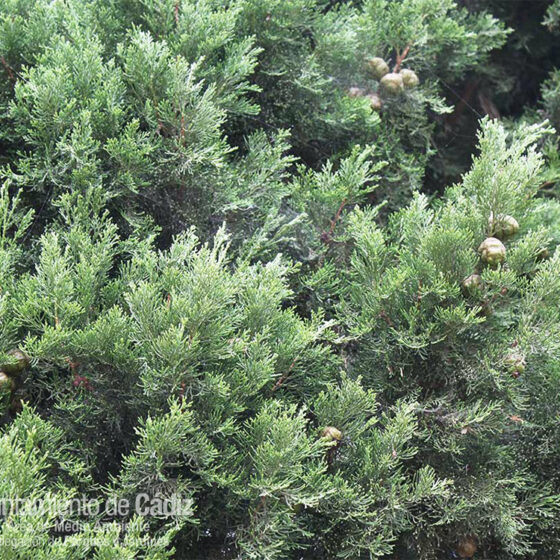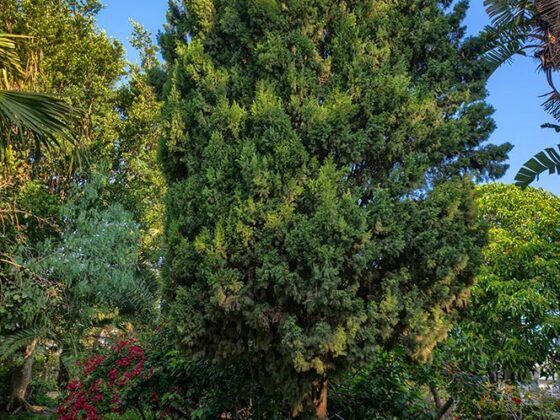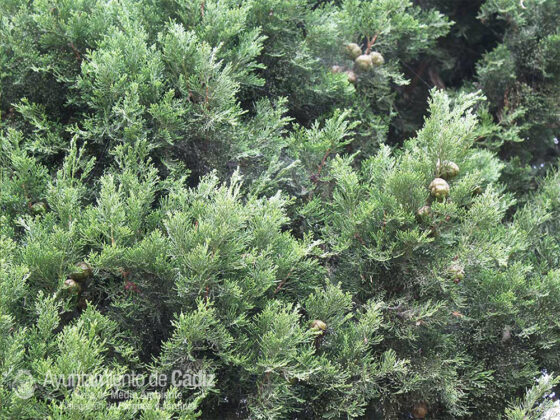Mediterranean Cypress
Cupressus sempervirens
Cupressus sempervirens, the common cypress or Mediterranean cypress, is an evergreen tree species of the Cupresaceae family. It has great longevity, specimens exist that are more than 1,000 years old.
It originates from eastern Mediterranean regions, with important areas in northern Libya, southern Greece (Crete and Rhodes), southern Turkey, Cyprus, western Syria, Lebanon, western Jordan and certain areas of Iran. It is believed that two or three thousand years ago it formed large forest masses in North Africa, few examples are left today.
Characteristics:
Height: between 25 and 30 metres. Sometimes, they can reach up to 35 metres.
Leaves: They appear in branches in scale form, and measure between 2 and 5 millimetres in length. They form dense foliage in a dark green colour.
Branches: fine, more or less cylindrical or tetragonal and in a dark green matte colour.
Flowers: the masculine ones are cylindrical pollinate between February and March. The feminine ones form sets of small pineapples or cones of greenish grey colour, that when maturing, they acquire a woody aspect. Flowering occurs in Spring and ripening occurs in the Autumn of the year following pollination, about 20 months later.
Seeds: the seed is found in the cones and have a very long-lasting germinative property.
Trunk: straight, can reach up to 1 metre in diameter, although some extraordinary examples have been found measuring up to 3 metres at its base.
It is found under two natural forms:
Horizontal (Cupressus sempervirens f.horizonis): with extended branching and has the appearance of Cedar or Pine.
Pyramidal (Cupressus sempervirens f.pyramidalis): columnar in shape; it is the most widespread form when in cultivation.
The Cypress was highly cultivated in the Greek-Roman world, becoming a common element of the Mediterranean garden. The Greeks considered it as a symbol of female beauty.
In other areas, the Cypress was considered a symbol of hospitality. In the old times, two Cypresses were planted at the door of a house to indicate to the travellers that the hospitality of the house offered them food and bed for a few days.
Regarding the durability characteristic of Cypress wood, it is often cited that the doors of St. Peter’s Basilica in the Vatican are from this tree and after twelve hundred years, they still show no visible signs of deterioration.
In July 2012, a forest fire lasting five days devastated 50,000 hectares of forest in the Valencian town of Andilla. However, in the middle of the calcined landscape, a group of 946 Cypresses, with an age of about 22 years old, was practically unharmed and only 12 Cypresses burned. Andilla Cypresses were planted by the European project CypFire, which studies several aspects of Cypress, including fire resistance.







